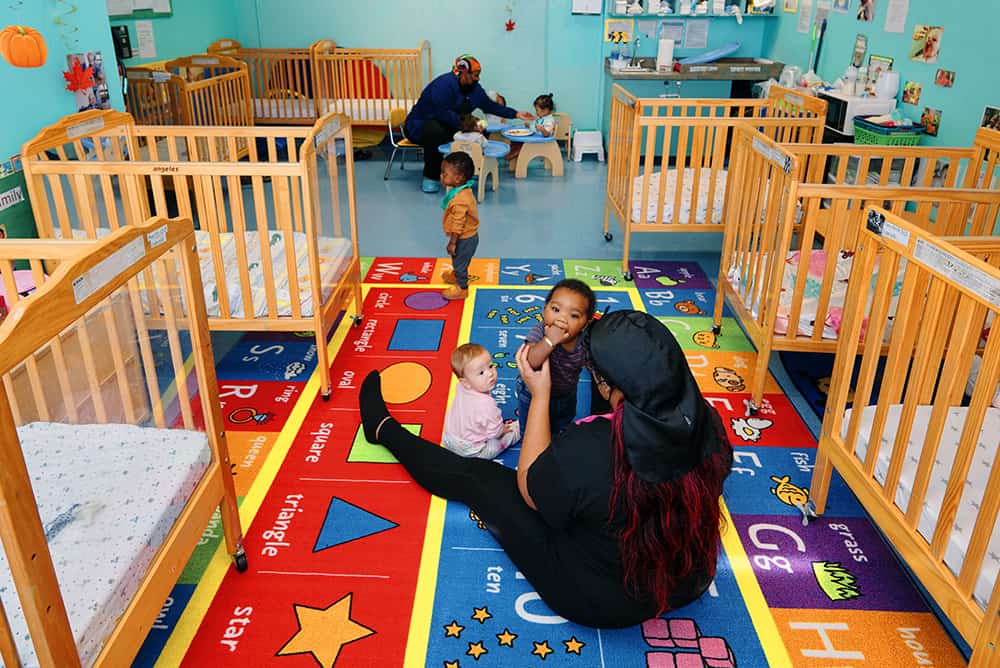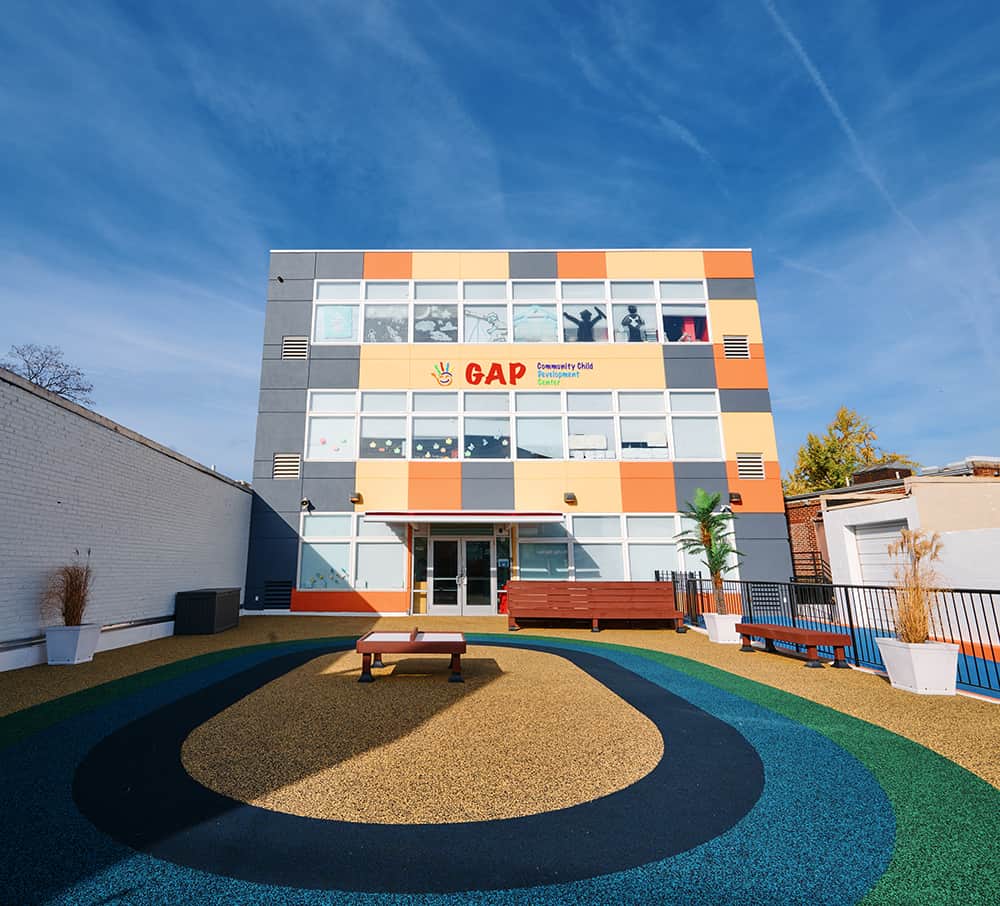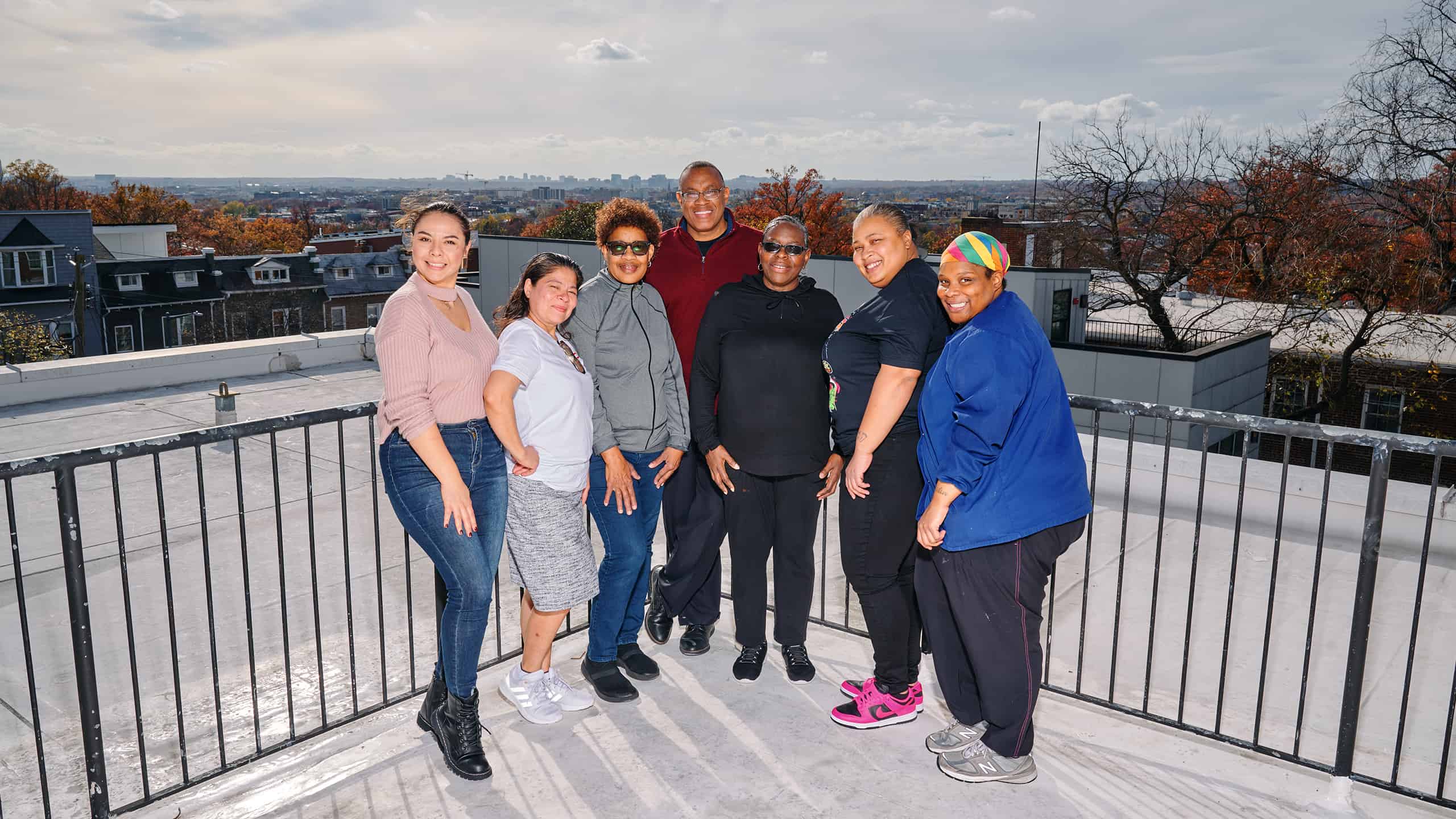A quick glance inside just one of the classrooms at GAP Community Child Development Center showcases families from around the globe. While some were born in the U.S. — and even in GAP’s Petworth community — many emigrated from countries such as Mexico, Nigeria and El Salvador. This local community resource is a true reflection of the multicultural community that comprises our nation’s capital. You could also say that GAP serves as a multigenerational family center: Some parents, who were once children at GAP, have now enrolled their own young ones, and a few of the facility’s educators actually began their journey at GAP as children.

Yet this community linchpin was on the verge of closing a few years back due to the dire effects of the pandemic combined with the ever-increasing rent and upkeep costs common in the gentrifying Petworth neighborhood.
That’s where LIIF came in, offering capital support in the form of lending and grants. GAP is now scaling up and is stronger than ever.
“I came on board at a pivotal time in GAP’s decades-long history. I immediately knew there was something to save here. This was a Black-led, nationally accredited child care center in a neighborhood with a lack of such high-quality facilities. Half of the staff, with backgrounds reflective of our children, have been at the center for over a decade,” explains GAP President and CEO Travis Harmon, who had met with parents passionate about the need for the beloved facility to stay open.
GAP parents are on tight incomes, with three-quarters qualifying for subsidies or Temporary Assistance for Needy Families (TANF). Some have experienced being unhoused or are young parents trying to make their way in the world. The families needed – and deserved – an early care and education space where their children could be nurtured starting at six weeks through age five. The fact that 90% of a child’s brain development happens before age 5, but only 14% of public education dollars are spent on early care and education in the United States, is why GAP’s dedicated early educators head to work each day.
To remain open, GAP first sought loans from traditional lenders, but “that process ended quickly,” according to Travis. High interest rates and large downpayment requirements made accessing such capital unattainable.
A determined Travis and his team then set their sights on the community development financial institution (CDFI) sector. Having previously worked in the community development space, Travis knew of the flexible capital available from CDFIs. LIIF’s mission alignment with Travis’ vision for GAP made this a synergistic relationship.
First, GAP needed to buy the five-level, 15,000-square-foot building – no easy task in the tight northwest Washington, D.C. market. That’s where LIIF’s initial tranche of capital to GAP came into play, in the form of a $4.23 million Brighter Futures Fund (BFF) low-cost loan with a 3.5% interest rate and 90% loan-to value (LTV). BFF harnesses the power of the strong partnerships we forge: As part of Goldman Sachs’ One Million Black Women initiative, the Urban Investment Group within Goldman Sachs Asset Management had invested $20 million to support LIIF’s innovative BFF, a Special-Purpose Credit Program (SPCP) that aims to create and preserve child care facilities. Goldman Sachs also provided LIIF with $1.6 million of additional funding for the program through a grant.
Second, GAP needed to expand to meet the huge demand from families in the Petworth community. GAP was able to fund this expansion with support from the Office of the State Superintendent of Education’s (OSSE) Access to Quality Child Care Grant program, which provides funding to establish new or expand existing child development facilities serving infants and toddlers. LIIF was selected by OSSE to administer the grant program and assisted GAP through the application process. GAP received $518,230 through the Access to Quality Child Care grant for the build-out. This funding will allow GAP to add four new classrooms and increase its licensed capacity to serve up to 96 children at a time, so even more children will benefit from the center’s culturally responsive programs. Eleven new jobs will also be created, scaling community impact.
Last up was the need to redo the aging 7,675-square-foot play area. Because it actually sits on the roof above the lower level, there had been some weather-related damage over the years. LIIF and OSSE assisted GAP with a $97,000 grant, partnering with the National Wildlife Federation (NWF). GAP worked with NWF to completely reimagine their outdoor space, based on extensive input from staff and families during design meetings. There is now a rainbow track in the middle of the accessible play area, with sections designated for infants, toddlers or Pre-K children. A new awning will soon provide shade during the sweltering summers of the District. Planters add a colorful touch, and benches create an opportunity for educators and children to interact at eye level, plus a space for rest.

The reality is that without LIIF’s support GAP would no longer be here. LIIF saw GAP’s vision.
GAP Community Child Development Center President and Chief Executive Officer Travis Hardmon
Travis now sees GAP as a model and looks to share best practices. He wants to spread the word about GAP’s story of the power and agency of community ownership. By owning rather than renting their building, GAP is saving a staggering $200,000 per year. He knows first hand the deep impact CDFIs generate by nimbly deploying capital, in the form of low-interest loans and grants, into historically excluded communities such as Petworth. He is especially aware of the impact GAP makes each day on the lives of families in the community.
“Recently, a parent came back to visit after their child had started kindergarten. They thanked the teary-eyed GAP educator for getting their youngster on the path to success. That’s what makes this all worthwhile,” concludes a thankful Travis.
